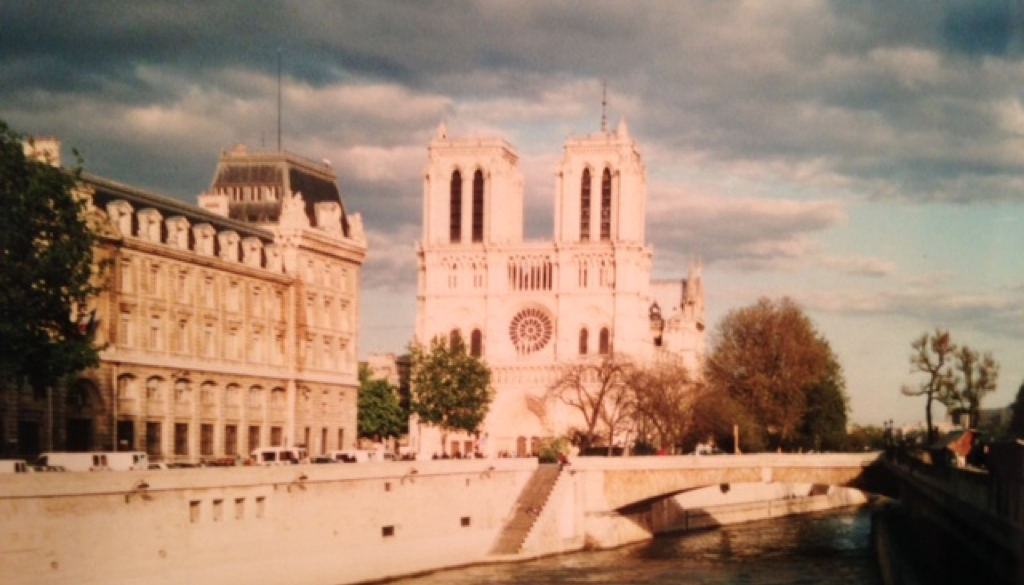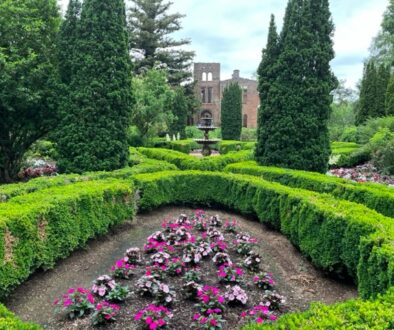Notre Drame

Atlanta, GA
April 15, 2019
Beware the Ides of April.
Today we rendered unto Caesar what Caesar says are the things that belong to Caesar.
In Paris, a much greater treasure has been lost. As Holy Week begins and Lent ends, we grieve for the things that belong to God.
During the reign of Louis VII and Bishop Maurice de Sully, on an island in the Seine atop the ruins of a Roman Temple to Jupiter, Pope Alexander III laid the foundation stone of a new cathedral.
In the Middle Ages a church was often likened to a ship steering for harbor. And Nôtre Dame de Paris would stand for almost nine centuries athwart the stern of the Île de la Cité.
Paris adopted the cathedral as its heart, and the nautical image into its coat of arms…including the bold motto Fluctuat nec mergitur – she is tossed on waves but not overwhelmed.
Until today.
Or so it seems.
When I heard the news I didn’t, or rather couldn’t, believe it.
And when I did believe it, I assumed the fire must’ve been, had to be, confined to a contained area to the rear of the apse. Then, the smoke rose, the spire fell and, like the wood within the vaults, my optimism was in ashes.
This glorious church is both a ship and an anchor. And a lodestar. Few edifices rival it as a symbol of what was Christendom, and of what remains of Western Civilization.
Fortunately, they built things better in the Middle Ages than they do today. Fires regularly ravaged these medieval symphonies in stone, often displacing notes but usually preserving the tune.
Masons hauled stones from quarries miles away, floated them down the Seine, and pushed or dragged them up the Rue Neuve-Nôtre-Dame that was hastily carved through the confines of twelfth century Paris.
Two centuries later, the work was complete, towering over narrow cramped streets crowded with as many pilferers and prostitutes as prévôts and priests. Not till Haussmann redesigned the city under Napoleon III did Our Lady have room to breathe.
But she could always extend her arms.
It was to this cathedral that Henri IV came on his knees in 1593 to declare Paris worth a Mass. During the Hundred Years’ war Henry VI of England was before the altar declared King of France, and during the Wars of Religion Mary Queen of Scots married Catherine de Medicis’ unfortunate son Francois II.
French Revolutionaries, who destroyed everything, never – despite their threats – razed this church…opting in typically demented fashion to instead convert it to a ludicrous “Temple of Reason”. They decapitated statues, desecrated the altar, and carried a painted statue from the Opera down the aisle as a “Goddess of Reason”.
But even these lunatics did not bring down Nôtre Dame.
In the revolutionary wake, Napoleon restored the cathedral so he could be crowned emperor amid its ancient and venerable symbols. The dead walls of the dilapidated church were covered with hangings and baldachins to lend sumptuousness to the imperial ceremony.
Almost three decades later, Hugo created Quasimodo and Esmeralda, and gave Nôtre Dame new life.
King Louis Philippe commissioned Jean-Baptiste-Antoine Lassus and Eugene Viollet-le-Duc (who also created the walled city of Carcassonne) to restore the edifice in 1848, including replacing the original spire removed during the reign of Louis XV.
This is the spire that melted, and fell, a few hours ago.
Four decades after Hugo breathed life back into the dying church, the Paris Commune again tried to kill it…along with other elements of civilization its revolutionary predecessors left standing.
They burned the Hôtel de Ville, and made their way to Nôtre Dame. They pulled up the pews, piled them in the center of the nave, and doused them in petroleum. Parisian artists, awed by the beauty of the restored cathedral, talked them out of lighting the match.
So, like punk kids dissuaded from egging one house by the opportunity to toilet paper another, they toppled the Vendome Column instead.
But Nôtre Dame continued to stand. And to stand for Paris. And for France.
Louis XIV hung flags of victory in the same nave in which De Gaulle celebrated liberation with a Te Deum in 1944.
I visited or heard Mass at Nôtre Dame on many occasions when I was fortunate enough to be in Paris almost monthly several years early this century.

As the life of this magnificent wonder passes before my eyes, I cannot conceive it not being there.
But what’s this?
Perhaps, I may not have to…or at least not entirely.
I am now hearing that while the roof and much of the building…not to mention the Rose Window, most other stain glass, and many irreplaceable treasures within…are no doubt gone, the structure may be salvaged.
As the flames continue, we are relieved that Nôtre Dame may not go the way of the Lighthouse of Alexandria, Temple of Artemis, or the Colossus of Rhodes.
But we also do not want it to go the way of the Parthenon, and hope it can be rebuilt.
If Dresden, Berlin, and Nuremberg each emerged from the ashes, this shrine certainly can too.
Above all, Nôtre Dame is a Catholic Church. A Shrine to Our Lady and home to the Crown of Thorns placed on Her Son that first Good Friday.
Today, she carries the cross. We endure the Passion.
And await the Resurrection.
JD



